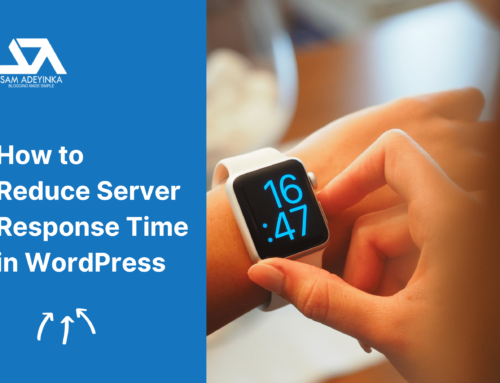Last updated on September 21st, 2023 at 01:41 pm

Table of Contents
Toggle10. Measuring Success
Alright, we’ve covered the ins and outs of creating your authority blog. But here’s the deal, creating it is just the first step on a journey that leads to blogging stardom. Now, let’s talk about how to measure your blog’s success. After all, you need to know if all that hard work is paying off, right?
Tracking Your Blog’s Authority
Your blog’s authority isn’t some mystical realm only accessible to the chosen few. It’s tangible, measurable, and within your grasp. Here’s how to track it:
1. Monitor Your Backlinks
Remember those backlinks we worked so hard to acquire? They’re like the gold stars on your authority report card. Tools like Ahrefs or Moz can help you keep an eye on them. The more quality backlinks, the higher your authority.
2. Analyze Your Domain Authority (DA)
Domain Authority, or DA, is like your blog’s street cred in the online world. Check it using Moz’s Open Site Explorer or similar tools. A rising DA indicates your blog’s increasing authority.
3. Keep an Eye on Organic Traffic
High authority blogs attract organic traffic like bees to honey. Tools like Google Analytics can tell you how many visitors are buzzing around your blog. An upward trend is a clear sign of growing authority.
Metrics That Matter
Success isn’t just about bragging rights; it’s about achieving your goals. These metrics will show you if you’re hitting the mark:
1. Engagement Metrics
- Bounce Rate: How many visitors leave immediately? A low bounce rate is a good sign.
- Time on Page: Longer visits indicate engaged readers.
- Comments and Shares: Social proof matters; the more, the better.
2. Conversion Rates
- Email Sign-ups: Growing your subscriber list? Fantastic.
- Sales and Conversions: Whether it’s products or services, increasing sales is a key metric.
- Click-Through Rates (CTR): For affiliate links and CTAs, a high CTR is the goal.
3. SEO Performance
- Keyword Rankings: Are you ranking for your target keywords? Climbing the SERPs shows authority.
- Organic Traffic: Increasing organic traffic means more people are finding your blog.
- Link Profile: Keep building high-quality backlinks to strengthen authority.
Tools for the Job
You don’t have to do all the heavy lifting manually. Several tools can help you measure success efficiently:
- Google Analytics: For tracking website traffic and user behavior.
- Google Search Console: To monitor keyword performance and fix issues.
- Ahrefs: For backlink analysis and competitor research.
- Moz: To track Domain Authority and site health.
- SEMrush: A comprehensive SEO suite for analyzing your blog’s performance.
There you have it. Measuring your blog’s authority and success isn’t rocket science. It’s a combination of tracking the right metrics, using the right tools, and staying committed to your blogging journey.
So, roll up your sleeves, dive into the data, and watch your blog’s authority soar. Remember, building a high authority blog is an ongoing adventure, and each metric you improve brings you closer to dominating your niche.
Now, go out there and conquer the blogosphere!
Read this: How To Start A Blog — The Complete Beginner Guide For 2023


















Creating an authority blog takes time and dedication. To get started, focus on a niche you are passionate about and knowledgeable in. Consistently produce high-quality, informative, and engaging content that addresses the needs and interests of your target audience. Conduct thorough research and provide valuable insights to establish your credibility.
hello i am hosen …your blog is nice
Hi Sam Adeyinka!
I am really impressed with the information you have provided in this article. It’s a full-fledged article about the Authority blog .
I will definitely recommend this to others, thanks again!